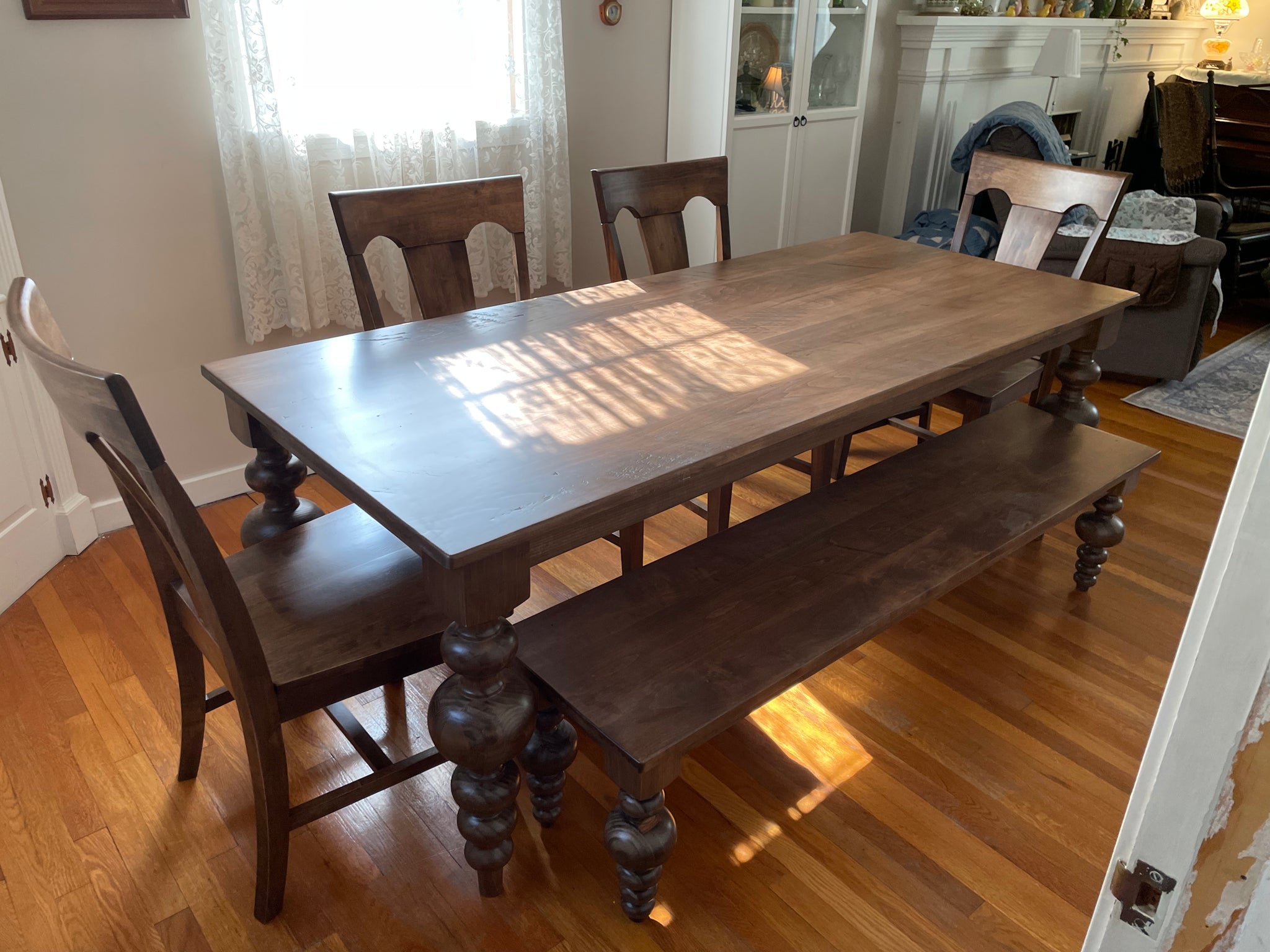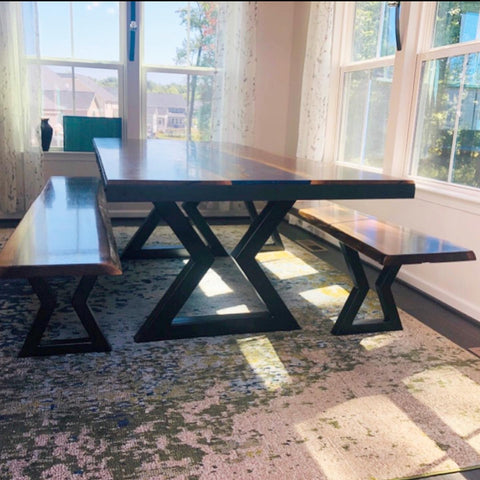Find the Ideal Dining Room Table Legs for Any Interior Design Style
Find the Ideal Dining Room Table Legs for Any Interior Design Style
Blog Article
From Conventional to Modern: Locate the Suitable Dining Area Table Legs for Your Style
The choice of dining-room table legs plays a critical function in specifying the general character of your room, linking the space between traditional workmanship and modern aesthetics. While traditional layouts such as cabriole and transformed legs stimulate a feeling of ageless class, modern styles like barrette and geometric options provide an opportunity for striking aesthetic interest. Reviewing the appropriate balance in between these designs needs a nuanced understanding of your existing décor and individual preference. As you think about these aspects, the question stays: just how can you seamlessly incorporate these diverse leg styles to create a harmonious dining experience?
Understanding Table Leg Styles
The variety of dining-room table leg styles can substantially affect both the aesthetics and capability of the room. Each leg style contributes unique visual elements and useful features, providing to varied style preferences and usage requirements. Recognizing these styles is important for choosing the ideal table that straightens with your general interior layout vision.
For circumstances, tapered legs offer a tidy, traditional look that can boost an area's style, while stand bases supply stability and optimize legroom, making them suitable for smaller spaces. Barrette legs, a trademark of mid-century modern layout, introduce a commercial flair, permitting a ventilated, open feeling. Trestle legs evoke rustic beauty, providing robust support and a sense of eternity.
Wooden legs can bring heat and structure, whereas metal alternatives frequently share a streamlined, contemporary ambiance. Ultimately, comprehending table leg designs is important for developing a natural eating area that shows individual design while making certain usefulness and convenience.
Traditional Table Leg Options
When picking dining-room table legs, conventional choices typically symbolize classic style and craftsmanship. These designs reflect a rich heritage and a commitment to high quality, making them excellent for those that appreciate traditional aesthetic appeals.
One of one of the most legendary traditional leg designs is the cabriole leg, defined by its elegant curved form. This layout commonly includes decorative makings and is most commonly found in Queen Anne and Chippendale furniture. One more popular choice is the turned leg, which boasts a series of smooth, rounded shapes that supply a timeless look while maintaining security.
Moreover, the straight leg, while basic, supplies a sturdy and basic structure that can blend effortlessly with a selection of tabletop styles. For those attracted to ornate describing, claw-and-ball feet legs stimulate a sense of grandeur and can act as a magnificent centerpiece in any type of eating area.
Lastly, pedestal bases, although not purely legs, supply a different typical choice that permits sufficient legroom and can be wonderfully sculpted. Each of these standard leg designs adds to the overall atmosphere of a dining-room, weding function with visual appeal.

Modern Table Leg Layouts
Modern table leg styles offer a varied variety of designs that highlight ingenious products and tidy lines. These designs often focus on capability while my company functioning as striking prime focus within a dining room. Minimalist looks prevail, with legs crafted from products such as steel, glass, and engineered timber, which add to a airy and modern feeling.
One popular layout is the hairpin leg, characterized by its slim, tapered structure that gives stability without frustrating the table top (dining room table legs). This style is often discovered in mid-century modern furnishings and can effortlessly complement various table forms. An additional trend is the usage of geometric shapes, where legs might handle angular or unbalanced forms, adding visual rate of interest and a touch of virtuosity

Mixing Designs for Unique Areas
Commonly, home owners seek to develop one-of-a-kind eating spaces that show their personal style by blending numerous layout elements. This method permits the incorporation of varied aesthetics, causing an unified yet unique environment. Pairing a rustic wood table with smooth, contemporary steel legs can produce an appealing comparison that raises the room's general charm.
Additionally, integrating vintage table legs with contemporary tabletops can stimulate a feeling of history while preserving a contemporary perceptiveness. Such combinations not just display individual preference but additionally encourage imagination, allowing home owners to curate a space that really feels both personal and welcoming.
Shade plays an essential function in this blending procedure; choosing table legs that enhance or contrast with the existing color design can improve aesthetic interest. As an example, whitewashed legs can soften the boldness of a dark table surface, developing a well balanced aesthetic.
Tips for Selecting the Right Legs
Choosing the right table legs is crucial for attaining both functionality and aesthetic charm in your dining area. Begin by thinking about the general style of your area. Traditional settings profit from legs that feature blog elaborate carvings or turned styles, while contemporary areas might call for sleek, minimal designs.
Following, analyze the height and security of the legs. dining room table legs. Common eating tables range between 28 to 30 inches in height, so guarantee the legs enhance this dimension for convenience. In addition, durable products, such as hardwood or steel, can boost stability and long life
Evaluate the leg shape as well-- options consist of directly, tapered, or pedestal styles. Straight legs offer a timeless look, while conical legs can add a touch of sophistication. Pedestal bases give enough legroom and are perfect for smaller spaces.
Conclusion
In summary, selecting the ideal next dining room table legs requires careful factor to consider of both traditional and modern-day styles. Traditional options such as cabriole and transformed legs offer classic style, while modern-day styles like barrette and geometric forms provide a contemporary touch. By harmonizing leg design, elevation, and product with the total decor, a natural and inviting atmosphere can be attained. Inevitably, the selected table legs must reflect the desired aesthetic, boosting the eating experience within the area.
The selection of dining room table leg styles can substantially influence both the aesthetics and functionality of the area. Eventually, understanding table leg designs is necessary for developing a natural dining area that shows individual design while ensuring functionality and convenience.One of the most renowned standard leg styles is the cabriole leg, characterized by its graceful curved shape. Straight legs provide a timeless look, while conical legs can include a touch of beauty.In recap, selecting the excellent eating space table legs calls for cautious factor to consider of both typical and modern styles.
Report this page